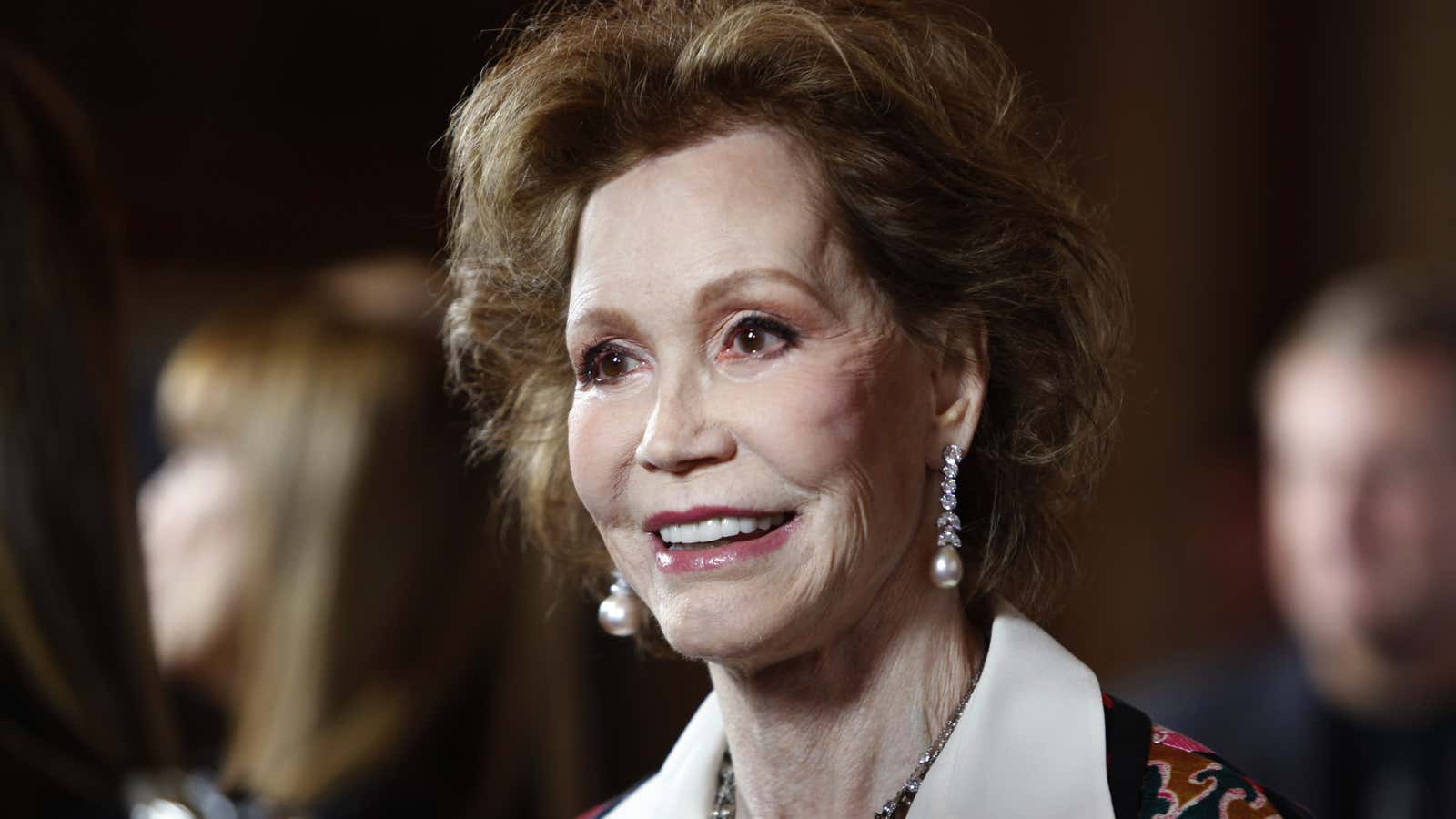Mary Tyler Moore blazed a bold, hilarious trail for women in entertainment.
The actor and comedian, who died at 80, her publicist confirmed today, also showed the American public a new image of a modern woman through her roles in The Dick Van Dyke Show in the 1960s and her eponymous series in the 1970s. Into that spotlight with her, Moore also brought a modern woman’s wardrobe, and especially pants—cool, hip-hugging capri pants—at a time when it was still uncommon on American television to see a woman in anything other than a skirt.
Those pants and the other clothes Moore wore in those starring roles were essential in creating the characters she played. They reflected for the first time a rapidly growing segment of American women who saw themselves as independent, forward-thinking, and fundamentally different than the housewives that were a staple on television, and she selected many of those outfits herself.
When she took on the role of Laura Petrie on The Dick Van Dyke Show, Moore was unhappy with the idea of repeating the stereotypical housewife image, and she fought for the pants that became a signature of her character. She explained their importance in a 1995 interview on NPR:
I mean, society’s expectations at that point still said, hey, wait a minute, lady, you only go so far here. But I think we broke new ground, and that was helped by my insistence on wearing pants, you know, jeans and capri pants at the time because I said I’ve seen all the other actresses and they’re always running the vacuum in these little flowered frocks with high heels on, and I don’t do that. And I don’t know any of my friends who do that. So why don’t we try to make this real? And I’ll dress on the show the way I do in real life.
The show’s sponsors weren’t pleased at first. They thought the tight pants revealed too much of Moore’s rear end—they were concerned with the “cupping under”—and only allowed her to wear them in one scene per episode. But Moore persisted, and began sneaking them into more scenes. They became a hit, and helped Moore become an icon.
Later, in her own show as character Mary Richards, who arrives in a big city from a small town and works her way up to become a successful news producer, Moore captured the look of a stylish, ambitious career woman—a precursor to characters such as Carrie Bradshaw in Sex and the City.
Again, Moore was putting her own style on screen. She would go to designer Norman Todd’s showroom and select looks herself, which she got to keep once the show was done with them. “I try to stick to tailored styles for dresses and neat, chic fashions for pantsuits,” she said in one interview. “Off screen those are the styles I go for, too.”
She also made a point of her character wearing outfits on the show more than once, just as women do in real life.
Moore will be remembered most for making people laugh, but she was also a model to a generation of women, who saw themselves reflected in her.
